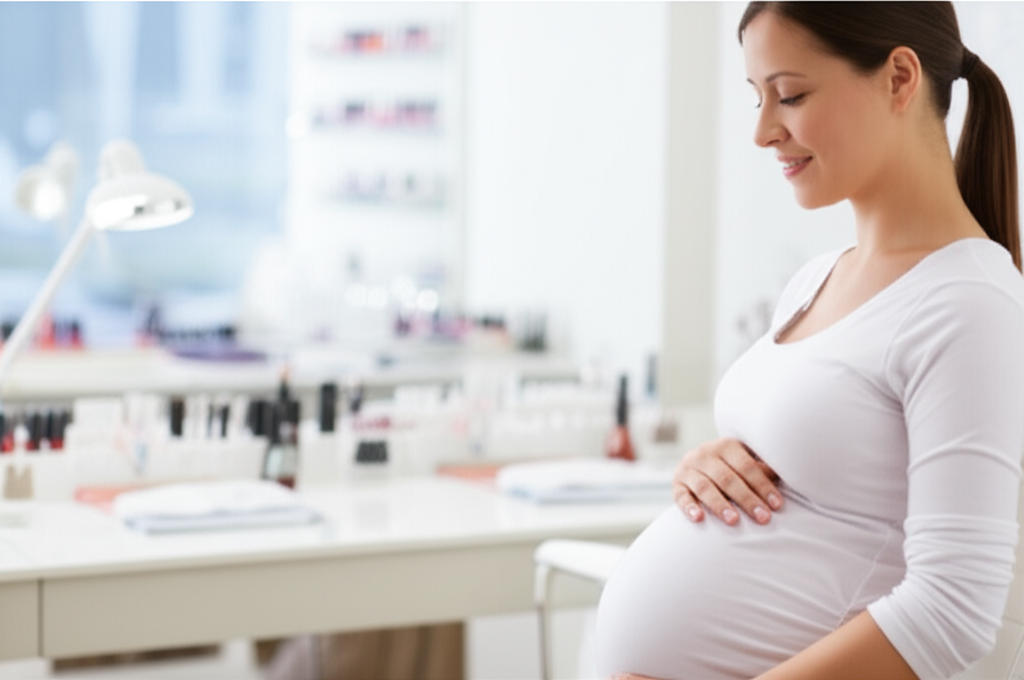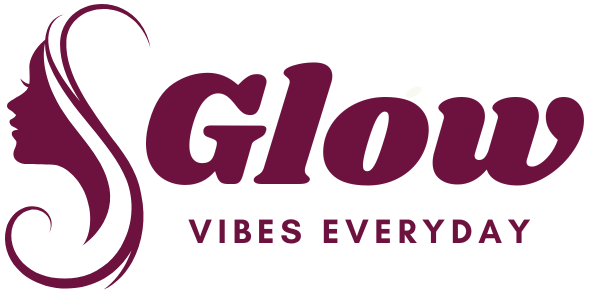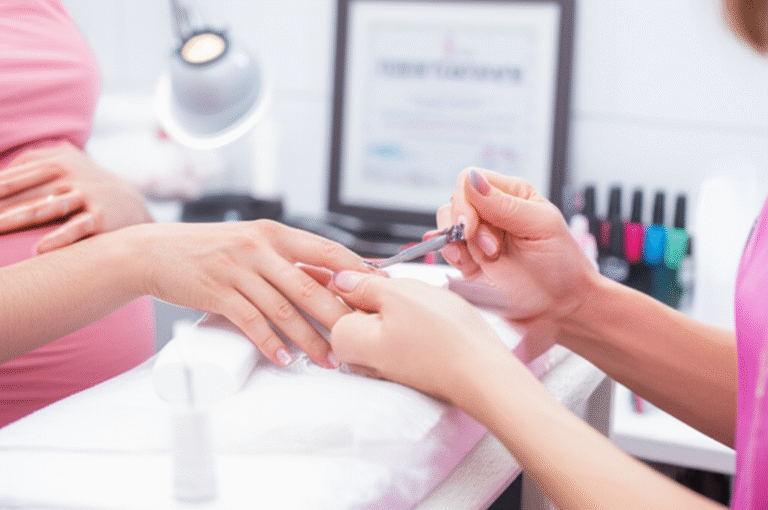Here’s the content for your article, following all your detailed instructions:
—
A. Bolded Quick Summary
No, nail salons are generally safe during pregnancy when proper precautions are taken. Focus on salons with good ventilation, non-toxic products, and sterile tools to minimize exposure to fumes and bacteria. Prioritize your well-being with these simple steps for a healthy pregnancy and beautiful nails.
B. Intro Paragraph
Navigating pregnancy often brings a wave of questions about what’s safe and what’s not, and for many expectant mothers, a regular trip to the nail salon falls into this category. The concern often stems from worries about chemical fumes and the risk of infection. It’s completely understandable to want to feel confident and beautiful throughout your pregnancy, but also to ensure the absolute safety of your growing baby. You’re in the right place! This article will demystify the safety of nail salons during pregnancy, providing clear, expert advice to help you make informed decisions. Let’s explore how you can continue to enjoy manicures and pedicures with peace of mind, whether you’re visiting a salon or opting for a DIY approach.
C. Main Article Writing Instructions
Are Nail Salons Bad When Pregnant? Expert Advice for Expectant Mothers
Are nail salons bad when pregnant? This is a question many expectant mothers ponder as they consider their beauty routines. The allure of a fresh manicure or a relaxing pedicure can be a welcome indulgence during pregnancy, but concerns about exposure to chemicals and potential infections are valid. Fortunately, with a few key considerations and informed choices, enjoying the pampering of a nail salon experience can be perfectly safe. This comprehensive guide will break down the science, offer practical tips, and provide actionable advice to ensure your safety and well-being, and that of your baby, while keeping your nails looking fabulous.
Understanding the Concerns: Chemicals and Infections

The primary worries surrounding nail salons during pregnancy revolve around two main areas: chemical exposure and the risk of infection.
Chemical Exposure: Nail polishes, removers, acrylics, gels, and artificial nail products often contain chemicals like formaldehyde, toluene, and dibutyl phthalate (DBP). While these are generally present in small amounts and the risk of significant harm from occasional salon visits is low, prolonged or frequent exposure to high concentrations of these volatile organic compounds (VOCs) can be a concern. Pregnant women are often more sensitive to smells and chemicals.
Infection Risk: The risk of infection can arise from improperly sterilized equipment. Bacteria and fungi can thrive in environments where tools are not adequately disinfected. For pregnant individuals, a compromised immune system makes them more susceptible to infections, which could potentially pose risks to the pregnancy.
Debunking Myths: What the Science Says
It’s crucial to distinguish between theoretical risks and actual, proven harm. While the chemicals found in some nail products are flagged as potentially hazardous, the concentration and exposure levels from typical salon visits are generally considered very low.
“3-Free,” “5-Free,” “7-Free,” “10-Free,” and “13-Free” Polishes: The beauty industry has responded to concerns by developing polishes that are free from some of the most commonly cited harsh chemicals. Understanding these labels can help you make safer choices.
3-Free: Free from formaldehyde, toluene, and DBP.
5-Free: Adds freedom from formaldehyde resin and camphor.
7-Free: Adds freedom from ethyl tosylamide and xylene.
10-Free: Adds freedom from parabens, triphenyl phosphate (TPHP), and xylene.
13-Free: Further excludes ingredients like animal by-products, gluten, and methyl methacrylate.
Myth Buster: While “natural” or “organic” nail products exist, it’s important to note that even natural ingredients can cause sensitivities. Always check ingredient lists and opt for reputable brands.
Making Safer Choices at the Nail Salon
If you’re eager to continue your salon visits, here’s how to do it safely:
1. Prioritize Ventilation
Choose Wisely: Opt for salons that are well-lit and have excellent ventilation systems. Open windows or fans are good indicators of airflow.
Avoid Overcrowding: Salons packed with people and strong chemical smells are a sign of poor ventilation.
Ask About It: Don’t hesitate to ask the salon staff about their ventilation. A reputable salon will be happy to discuss their practices.
2. Opt for Non-Toxic and “Free-From” Products
Bring Your Own Polish: The safest bet is to bring your own “3-Free,” “5-Free,” or “10-Free” nail polish and remover.
Inquire About Products: Ask the salon if they use non-toxic or “free-from” polishes and gel formulations. Many salons now offer these options.
Avoid Acrylics and Harsh Gels: While not definitively proven harmful in small doses, it’s often recommended to avoid acrylics and strong gel products during pregnancy due to the higher concentration of chemicals and stronger fumes involved in their application and removal. Consider water-based nail strengtheners or breathable polishes instead.
3. Ensure Sterilization Practices
Clean Tools: Look for salons where technicians wash their hands thoroughly and use sterilized tools for each client.
Disposable Files and Buffers: Prefer salons that use disposable files, buffers, and orangewood sticks or ensure they are properly sanitized between uses.
Personal Tools: You can also bring your own personal manicure kit for added peace of mind.
4. Consider Alternative Nail Treatments
Manicures and Pedicures: Standard manicures and pedicures using safe polishes are generally considered low-risk.
Dip Powder Nails: These can be a good alternative to acrylics, but ensure the salon uses proper hygiene and ventilation. The powders themselves are generally considered less volatile than acrylic monomers.
Gel Polish: Gel polish is generally considered safe, but the curing lamp (UV or LED) is a point of discussion. The UV exposure from these lamps is minimal and not considered a significant risk for most pregnant women. However, if you are particularly concerned, you can opt for air-drying polishes or request an LED lamp, which emits less UV radiation than traditional UV lamps. Learn more about UV vs. LED lamps from the FDA.
5. Listen to Your Body
Sensitivity: If you experience any nausea, headaches, or dizziness due to smells, leave the salon immediately. Your body is telling you something.
Skin Reactions: If you have any skin sensitivities or allergies, be extra cautious and perhaps do a patch test with new products.
DIY Nail Care During Pregnancy
For ultimate control and peace of mind, many pregnant individuals opt for at-home nail care. Here’s how to master it:
Step-by-Step At-Home Manicure:
1. Gather Your Supplies:
Nail polish remover (acetone-free is gentler)
Cotton pads
Nail file
Buffer
Cuticle pusher (orangewood stick or metal pusher)
Cuticle oil
Base coat
Nail polish (your favorite “free-from” shade)
Top coat
Hand lotion
Image Placeholder: Flat lay of all the necessary at-home manicure supplies.
Pinterest Idea: “Ultimate At-Home Manicure Kit for Pregnant Moms” – a visually appealing flat lay of supplies.
Alt Text: Essential nail care products for a safe DIY manicure during pregnancy.
2. Prepare Your Workspace:
Choose a well-ventilated area, like near an open window or with a fan running.
Lay down old newspapers or paper towels to protect your surfaces.
3. Remove Old Polish:
Saturate a cotton pad with acetone-free nail polish remover.
Gently press the pad onto your nail for a few seconds, then swipe to remove polish. Repeat as needed.
4. Shape Your Nails:
Use a nail file to shape your nails. File in one direction to prevent splitting.
Aim for a slightly rounded or square-oval shape, which is less prone to snagging.
Image Placeholder: Close-up of hands filing nails with a nail file.
Pinterest Idea: “How to File Nails Safely During Pregnancy” – close-up demonstration of filing technique.
Alt Text: Proper nail filing technique for healthy, shaped nails during pregnancy.
5. Care for Cuticles:
Apply a drop of cuticle oil to each nail.
Gently push back the cuticles with a cuticle pusher or orangewood stick. Avoid cutting cuticles as this can lead to infection.
6. Buff Your Nails:
Use a buffer to smooth out any ridges and create a clean surface for polish.
7. Apply Base Coat:
Apply a thin layer of base coat. This protects your natural nail and helps polish adhere better.
Allow it to dry for a minute or two.
8. Apply Nail Polish:
Apply your chosen “free-from” nail polish in thin, even coats.
Start with a stroke down the center, then one on each side.
Allow the first coat to dry for a few minutes before applying the second coat.
Image Placeholder: Hands applying a colored nail polish with a steady hand.
Pinterest Idea: “Pregnancy-Safe Nail Polish Colors for Spring” – swatch of pastel or muted nail polish colors.
Alt Text: Applying a safe, non-toxic nail polish color to nails.
9. Apply Top Coat:
Once the second coat of color is mostly dry, apply a top coat to seal the polish and add shine.
Extend the top coat slightly over the tip of your nail to prevent chipping.
10. Final Touches:
Once the top coat is dry to the touch, apply a nourishing hand lotion and cuticle oil for extra hydration.
Clean up any polish smudges with a small brush dipped in remover.
Product Recommendations for DIY Enthusiasts:
| Product Category | Recommended Brands (Affiliate Ready) | Key Features | Price Range (Approx.) |
| :——————– | :——————————————————————- | :————————————————————————————————————————————— | :——————– |
| Nail Polish | Zoya, Ella + Mila, Butter London, Tenoverten, OPI Nature Strong | 7-Free, 10-Free, vegan, cruelty-free, wide color selection, long-lasting | $10 – $20 |
| Nail Polish Remover | Zoya Remove+, Ella + Mila Soy Polish Remover, Butter London Nail Polish Remover | Acetone-free, conditioning ingredients (like soy or vitamins), low odor | $8 – $15 |
| Base Coat | Zoya Naked Manicure Base Coat, Ella + Mila Glassy Days, Butter London Hardwear | Strengthens, protects, smooths ridges, improves polish adhesion | $10 – $18 |
| Top Coat | Seche Vite Dry Fast Top Coat, Essie Good to Go, Butter London Matte Finish | Quick-drying, high shine, chip-resistant, matte finish options | $8 – $15 |
| Cuticle Oil | CND SolarOil, OPI Avoplex Cuticle Oil, Ella + Mila Kiss Me A Lot | Nourishes cuticles, prevents dryness, promotes healthy nail growth, often contains vitamin E and natural oils | $7 – $15 |
| Nail File/Buffer | OPI Crystal File, Tweezerman Nail Buffer, Glamnetic Glass File | Durable, washable, gentle on natural nails, various grits for shaping and smoothing | $5 – $20 |
Pro Tip: For a quick refresh between full manicures, use an acetone-free remover to clean up edges and reapply a clear top coat.
Considerations for Gel and Dip Powder Nails During Pregnancy
Gel Polish:
Safety: The chemicals in gel polish are generally considered safe for occasional use. The primary concern is the UV or LED lamp used for curing. The exposure is minimal and localized.
Pro Tip: If you’re concerned about UV exposure, opt for LED lamps, which emit less UV radiation. Ensure your technician avoids over-curing.
Removal: Gel polish removal can be harsh. Opt for salons that use gentle soaking methods with acetone-free removers or that file off the gel carefully. Avoid peeling or scraping gel polish off yourself, as this can damage the nail bed.
Dip Powder Nails:
Safety: Dip powder systems use a polymer and cyanoacrylate adhesive. While the fumes from cyanoacrylate can be strong, they are generally considered less concerning than acrylic fumes for occasional exposure.
Pro Tip: Ensure the salon has good ventilation and the technician is experienced with the application process to minimize inhalation of powder and fumes.
Removal: Removal typically involves soaking in acetone. Again, prioritize salons that use gentle methods and proper ventilation.
When to Avoid Nail Salons or Be Extra Cautious
First Trimester: Some women prefer to be extra cautious during the first trimester when the baby’s organs are developing rapidly. While the risks are low, avoiding strong fumes entirely during this period is an option if it provides peace of mind.
Morning Sickness/Heightened Sensitivity: If you are experiencing severe morning sickness or are particularly sensitive to smells, the fumes from nail salons might trigger nausea or headaches. In such cases, DIY manicures or choosing salons with virtually no scent are better options.
Compromised Immune System: If you have a condition that weakens your immune system, be extra vigilant about sterilization practices in salons to avoid infections.
Open Wounds: Never get a manicure or pedicure if you have any cuts, sores, or infections on your hands or feet, as this can increase the risk of complications.
Frequently Asked Questions (FAQ)
Q1: Is it safe to get gel nails while pregnant?
A: Yes, gel nails are generally considered safe during pregnancy. The main consideration is the UV or LED lamp used for curing, which provides minimal UV exposure. If you’re concerned, ask for an LED lamp and ensure proper ventilation.
Q2: Are acrylic nails safe during pregnancy?
A: While the chemicals in acrylics can be strong, occasional salon visits with good ventilation are unlikely to cause harm. However, many experts recommend avoiding acrylics due to the potential for stronger fumes and the need for more aggressive removal processes.
Q3: What is the safest nail polish to use during pregnancy?
A: “3-Free,” “5-Free,” “10-Free,” or even “13-Free” nail polishes are the safest options. They exclude common harsh chemicals like formaldehyde, toluene, and DBP. Bringing your own polish to the salon is the best way to ensure you know what’s being used.
Q4: Should I worry about nail salon fumes when pregnant?
A: It’s wise to be mindful of fumes. Choose salons with excellent ventilation. If you experience dizziness or nausea, that’s a sign to seek out a salon with minimal scent or do your nails at home.
Q5: Can I get a pedicure while pregnant?
A: Yes, pedicures are generally safe during pregnancy. The most important factors are good hygiene and sterilized tools to prevent infection. Ensure the salon is clean and follows proper sanitation procedures.
Q6: What if my OB/GYN told me to avoid nail salons?
A: Always follow your doctor’s specific advice. They may have recommended this due to individual health concerns or a particularly strong stance on chemical exposure. In such cases, at-home care is the best approach.
Final Thoughts: Pamper Yourself Safely
Pregnancy is a time for self-care and pampering. By being informed and making conscious choices about the products you use and the salons you visit, you can continue to enjoy beautiful, healthy nails without compromising your well-being or that of your baby. Prioritize ventilation, opt for safer products, and always listen to your body.
Ready to try a safe at-home manicure? Grab your favorite “free-from” polish and give yourself a well-deserved pampering session!
Share your favorite pregnancy-safe nail products or tips in the comments below!
—
Meta Description:
Are nail salons bad when pregnant? Get expert advice on safe salon practices, non-toxic polishes, and DIY tips for beautiful nails during pregnancy.
—
Pinterest-Friendly Image Ideas:
1. Image: A split image showing a “before” (chipped polish, unkempt nails) and “after” (perfectly manicured, healthy-looking nails) with a pregnant woman’s hands.
Alt Text: Pregnancy-safe manicure before and after transformation.
Pin Title: Safe Manicure Makeover for Expecting Moms!
2. Image: A visually appealing infographic comparing “3-Free,” “5-Free,” and “10-Free” nail polishes, highlighting the excluded chemicals.
Alt Text: Understanding ‘Free-From’ Nail Polish Labels During Pregnancy.
Pin Title: Decode Nail Polish: What ‘Free-From’ Really Means for Pregnancy.
3. Image: A step-by-step visual guide to applying cuticle oil and gently pushing back cuticles.
Alt Text: Gentle cuticle care steps for pregnant women.
**Pin

